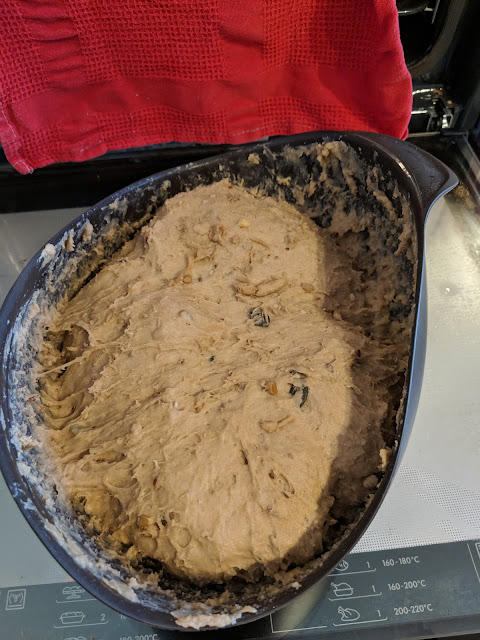Not-so-low-carb bread

My recent breads have been of a good structure and have risen nicely, but have almost invariably fallen again when baked. I tried some variations in flour combination and amount of kneading, but to no avail. Then I thought, maybe there's just not enough there to keep up the holes made by (mostly) steaming water. After all, while I use 500g of flour with 350g of water, I also thereto add about 150g of mostly water in the form of eggs, plus up to 50ml of oil, and some water in the soaked seeds. That adds up. So for this bread, I decided to use less water and add more flour, to see if the dough would form up more and stand up better while rising. I used 50g gluten, 150g wheat flour (type 550), 150g whole-wheat flour, and 150g sunflower seed flour, a scant tablespoon salt, 50g soaked seed mix, 50g walnuts, 300ml warm water, 20g yeast cake, 3 large eggs, and 20ml oil. Then while kneading, I added another 250g of the type 550 flour, getting the dough from super-sticky to only somewhat






